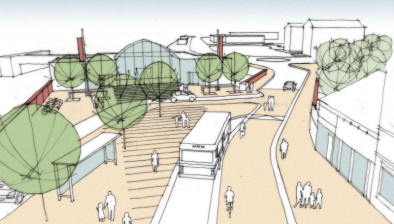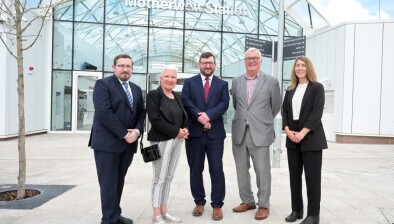Transport Scotland to study potential of high-speed trains connecting Lanarkshire to London in three hours

A high-speed rail link between Glasgow and Carstairs, as well as the potential for a new interchange station at Eurocentral, are being considered as part of a feasibility study to be carried out by Transport Scotland.
The transport body has been investigating the potential of routing the High Speed Rail network to Scotland along with the best route for doing this to enable connectivity to Glasgow, Edinburgh and the rest of the Scottish Rail network, with Eurocentral considered to be “ideally located” for an interchange station.
A report presented to North Lanarkshire Council’s enterprise and housing committee last week suggested that the move could mean commuters would be able to travel by rail from here to London in under three hours.
The paper put before councillors stated: “High-speed rail could potentially bring significant benefits to North Lanarkshire, the City region and indeed the whole of central Scotland.
“Critically, high-speed rail provides fast, efficient and cost effective transport, connecting major cities and centres of employment, and in this case, could enable journeys to London to be sub-three hours and travel to other towns, cities and economic centres such as Manchester to be within reasonable commuting times.”
High Speed Rail and High Speed Rail 2 (HS2) were developed to meet a near future need for greater capacity on the main railway lines between London and the North of England. It had been identified by Network Rail that if this was not carried out then the West Coast mainline would be full by the mid 2020s.
The proposed network was extended to include new lines to Yorkshire as well as Manchester and it has been identified by Transport Scotland that this should be extended to Scotland to connect Scotland with the major cities of England including London.
The report argued that this would meet the objectives of increasing economic benefits for areas around the railway extension and would reduce carbon emissions.
The report added: “For North Lanarkshire, the proposal of a station at Eurocentral could bring a significant range of economic benefits in terms of supporting existing businesses, business growth and inward investment.
“This strengthening of the economy and increased access to markets would provide real economic benefits to our local businesses and communities.”
A feasibility study is due to begin this month, and the planning/design works would commence in 2019.
It is envisaged in the report that construction would take three years, from 2026-2029.

Meanwhile, identifying potential transport investment in Scotland over the next 20 years will be the focus of the update of the Strategic Transport Projects Review (STPR2) starting later this year.
Transport minister Humza Yousaf said the Scottish Government will work together on the review with local councils, other key stakeholders, community groups, special interest groups and the general public.
Speaking at the Scottish Transport Infrastructure conference in Edinburgh, Mr Yousaf said:
“This government has already shown its strong commitment to investing in the country’s transport infrastructure. We have delivered the iconic £1.35 billion Queensferry Crossing and the M8/M73/M74 Motorway Improvements projects and are progressing the design work for both the A9 and A96 Dualling programmes to name but a few.
“On rail, as part of our £3.5 billion capital investment programme to 2019, we are progressing our plans for the Edinburgh to Glasgow Improvement programme (EGIP), Aberdeen to Inverness rail line and the Highland Mainline.
“However, we now want to look to the future and STPR2 will examine the strategic transport infrastructure interventions required to support Scotland’s Economic Strategy, including inclusive growth objectives, reflecting outcomes and priorities to be set out in the National Transport Strategy (NTS2) and will align with other Scottish Government national plans, policies and strategies, including the National Planning Framework (NPF4) and the Climate Change Plan.
“STPR2 will help ensure that we deliver transport infrastructure improvements for Scotland which are fit for the 21st Century. We are already engaging with stakeholders in the Borders and in Aberdeen and we expect to start similar engagement in the south west of Scotland shortly.
“The review, to be completed within the lifetime of the current Parliament, will have both a national and a regional focus. The scope of the review will extend to the strategic road and rail networks and will also consider national infrastructure investment to support active travel, island connectivity, buses and ferries.
“We want to engage with as many groups and people as possible as we look to shape the future of transport in Scotland. We will be involving local councils and Regional Transport Partnerships (RTP’s) and looking to engage business and community groups, special interest groups and the wider public.”














